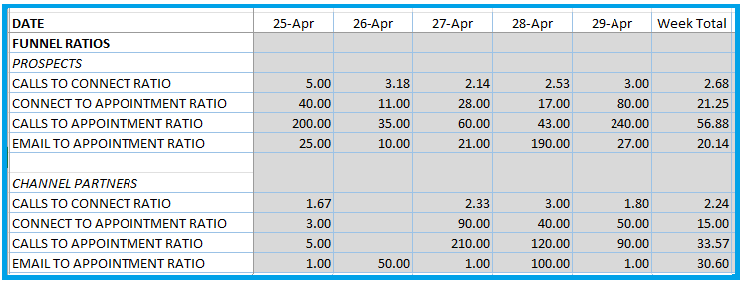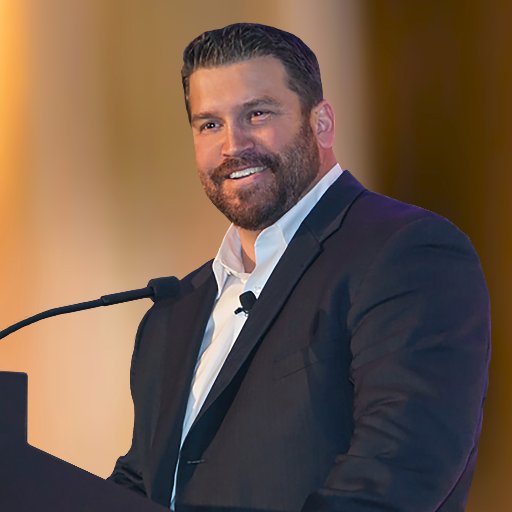Sales Activity
Out of the gate, let me state that outside of strategic road-mapping, I am not big on measuring activity. I prefer to measure results. Afterall, sales activity… and a subway token, will get me a ride. However, if results are suffering, activity should be measured, analyzed, and scrutinized. Activity that breeds results is appropriate. Activity for activity’s sake is a waste of time. If organic growth is lacking, it is time to act.
PEOs can sell in robust and sluggish economies. PEOs can sell at a discount and at higher than market rates. PEOs can sell in hard and soft insurance markets. The PEO industry is one of the most resilient industries. If organic growth is an issue, it is either an issue with the sales department, the PEO offering/execution, or both. For this article, we’ll solely look at the sales department side of the equation.
Volume + Ratios
It is advisable to measure sales activity through the lens of volume and ratios. Volume is the amount of activity completed. Ratios are the throughput of said activity. The combination of these two factors will provide insight into where activity should be weighted, and where further training may be required for the sales rep. For an example, please see Figure 1.
Figure 1 – Sales Activity Volume

As noted in Figure 1, the sales rep made 182 outbound calls to prospects. Of these attempts, they connected with 68. Of the 68 connects, they scheduled 3 appointments. The rep also sent 143 emails to prospects which generated 7 appointments. The rep also called 47 prospective channel partners, of which they connected with 21. These 21 connects resulted in 1 channel partner appointment scheduled. The rep emailed prospective channel partners 15 times resulting in 0 appointments. Figure 2 illustrates the ratio for the activity outlined in Figure 1.
Figure 2 – Sales Activity Ratios

As noted in Figure 2, on average for the week, it took the rep 2.68 calls to connect with a prospect. It took an average of 21.25 connects to schedule an appointment. Based on the call and connect ratios, it took the rep 56.88 calls to schedule 1 prospect appointment. With prospect emails, it took the rep on average 20.14 emails per 1 appointment scheduled. With channel partner outreach, it took the rep on average 2.24 calls to connect, and 15.00 connects to schedule 1 appointment. This resulted in 33.57 calls per 1 appointment scheduled. With their channel partner email efforts, it took 30.60 emails to schedule 1 appointment.
Data Insight
There is information that can we surmise from the data in Figures 1 and 2. First, we can determine if the rep’s activity is suitable. Second, we can determine where the rep is receiving the greatest throughput to results. Third, we can gain insight into areas for further training or adjustments. Let’s assume for a moment that the activity volume is appropriate. We can then determine, based on throughput ratios, that the rep had greater success via email marketing than phone calls with prospects. The rep may require additional training to improve upon their connect to appointment ratios. If the call to connect ratio was low, the rep may want to try a different time of day to make their calls. Considering that the rep had decent success with email to appointment ratios, they should ensure that they continue this activity until they improve on the phones.
Regarding channel partner outreach, again the rep struggled with scheduling appointments on the phone. This is due to a low connect ratio coupled with a low call to appointment ratio. Moreover, the rep had a low email to appointment ratio with channel partners. It may be that the messaging to channel partners may require adjusting since both the phone and email efforts fell flat.
Final Thoughts
With a full activity proforma, we would include appointments, RFPs, closes, etc. Figures 1 and 2 are solely samples to convey an idea. The bottom-line is that if results are suffering, appropriate activity monitoring can pay dividends to the rep and the PEO. In the activity examples we provided, entering the data each day would take the rep less than 2 minutes to complete. Moreover, it would provide valuable insight into whether the rep is putting in the effort, where they may need additional training, where they can augment their activity to drive optimal results, and how messaging may require shifts.
As the rep improves, ratios improve, and the same volume of activity breeds greater results. If activity is measured, it should be done in a meaningful way that will provide insight into achieving improved results. Therefore, should your PEO measure sales activity? In short, if results are not optimal, yes. If a rep wants to gain greater insight into their ratios in order to understand the activity requisite to hit their goals, yes. Measuring activity is valuable, if it is done appropriately and does not detract from productivity time.
Author

Rob Comeau is the CEO of Business Resource Center, Inc., a business consulting and M&A advisory firm to the PEO industry. Rob conducts ongoing sales trainings for PEO clients aimed at developing consultative closers. To learn more about BRC’s sales training and go-to-market strategy program, please visit www.biz-rc.com.
